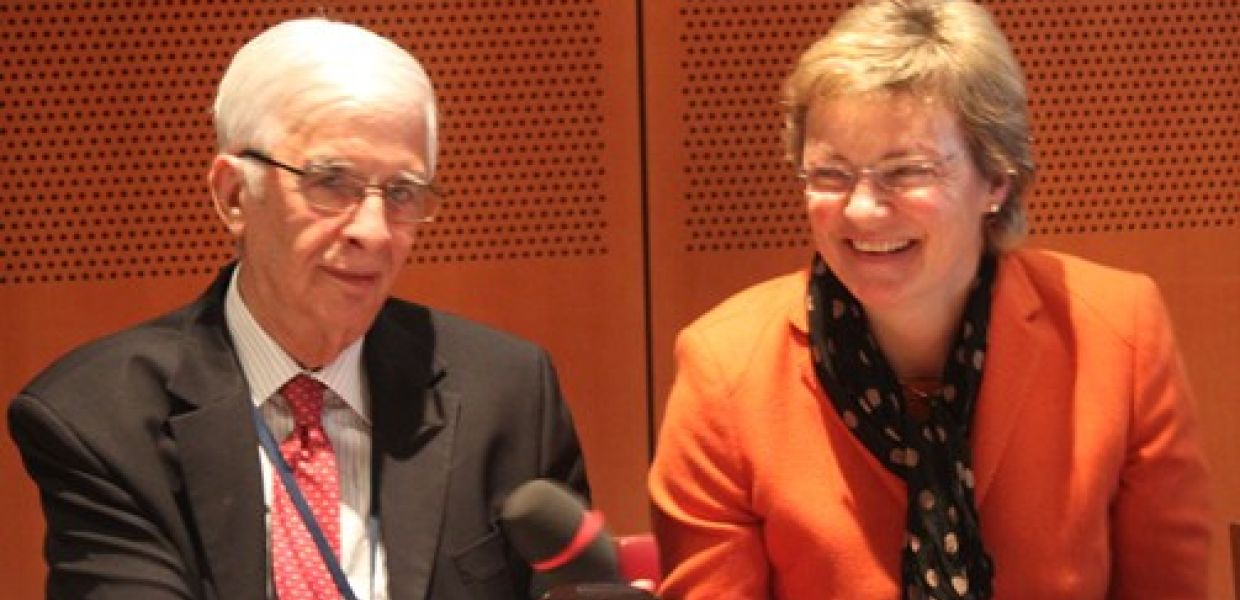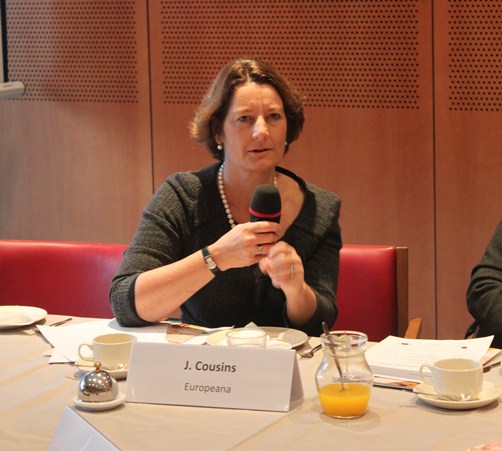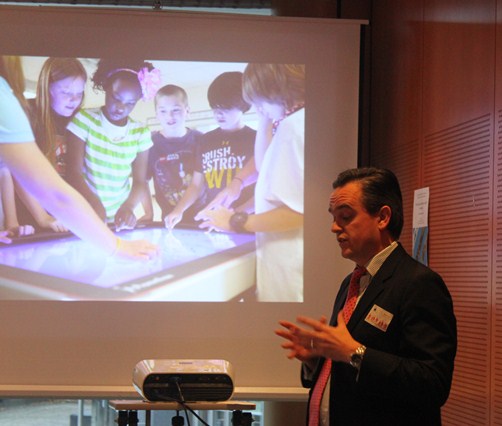MEPs discuss Europeana’s financial future

On 29 November, Members of the European Parliament (MEPs) and participants from Member States met over breakfast at the European Parliament to discuss the financial future of Europeana. The overall EU budget for 2014-2020 is under pressure and so are the funds allocated for structural funding of Europeana and its ecosystem.
MEP Monika Hohlmeier welcomed the nearly 30 participants. During the meeting, my role was to demonstrate the achievements and opportunities of Europeana, and Joe Harrod, Head of Editorial and Social Media of Promethean Planet, showed how Europeana is used in education.
We reminded our audience that the European Council stated in 2008 that ‘Digitisation and online accessibility of cultural material are essential to highlight cultural and scientific heritage, to inspire the creation of new content and to encourage new online services to emerge. They help to democratise access to culture and knowledge and to develop the information society and the knowledge-based economy.’
After four years of innovative work, Europeana now gives access to a European treasure of 23 million books, pictures, films, maps, archival records, museum objects and sound recordings from over 2,200 participating institutions across Europe. In early October, Europeana released its unique cultural heritage dataset as open data. Since then, Europeana has received 40 requests per month to re-use this data to develop innovative digital applications and 20 API implementations have been realised. The Europeana data model is now being used by the US, Korea and South Africa.

Jill Cousins, Europeana Executive Director
We explained how the release of open data helped to shape Europeana’s Strategic Plan 2011-2015. The Plan was developed in close collaboration with its key stakeholders, by looking at the value that they derived – or wanted to derive - from Europeana. This resulted in four tracks around which Europeana’s activity turns and on which all the resources are focused: aggregate – facilitate – distribute – engage.
Here are some of the examples we used to illustrate the ways Europeana’s treasure can be re-used.
Stackathon – a mobile application that allows users to select works (e.g. art works or artefacts) in Europeana, give them audio annotations and then share the selected works and annotations with the world.
E4E – a set of two widgets that automatically suggest cultural resources from Europeana and learning resources from Open Discovery Space to the author of educational pathways.
Casual Curator (now part of Decipher Storyspace)– gets semantically improved search results from Europeana to aid personal curation for learning and teaching, making it easy to organise, annotate and share culture via Android touch-screen devices.

Joe Harrod presenting Promethean Planet
Finally, Joe Harrod of Promethean Planet, the world’s largest interactive teaching community, explained why they consider Europeana as a fantastic resource for 21st century learning, saying: ‘At Promethean Planet, we have already seen a huge move in both the curriculum, and teaching practice towards guided research and Europeana is quite simply the best publicly funded resource there is. With a simple interface and an unprecedented wealth of material, Europeana is a hugely exciting portal for use in collaborative or home learning. Europeana has several distinguishing features that set it apart from other online archives, apart from the wealth of material and ease of accessibility. We need to support amazing enterprises like Europeana in order to create a curious, adept and clear sighted generation of European school leavers for 21st century.’
In a lively debate that followed, MEPs underscored the high added value to Europe of Europeana’s digital services. They discussed how they can support Europeana and its ecosystem. At this stage of development the platform does not yet receive adequate financing from the market. Hence, for the next seven years, structural funding by a grant (Connecting Europe Facility CEF art 10.4c) is an indispensable condition for Europeana’s maturation into a self-supporting digital infrastructure. The Europeana team stressed that access to digital resources of European heritage must remain one of the projects of common interest eligible for support (Telecom Guidelines Annex III). And finally, we emphasised that protection of the digital services budget under CEF-telecommunications promotes Europeana and access to European cultural heritage online.
